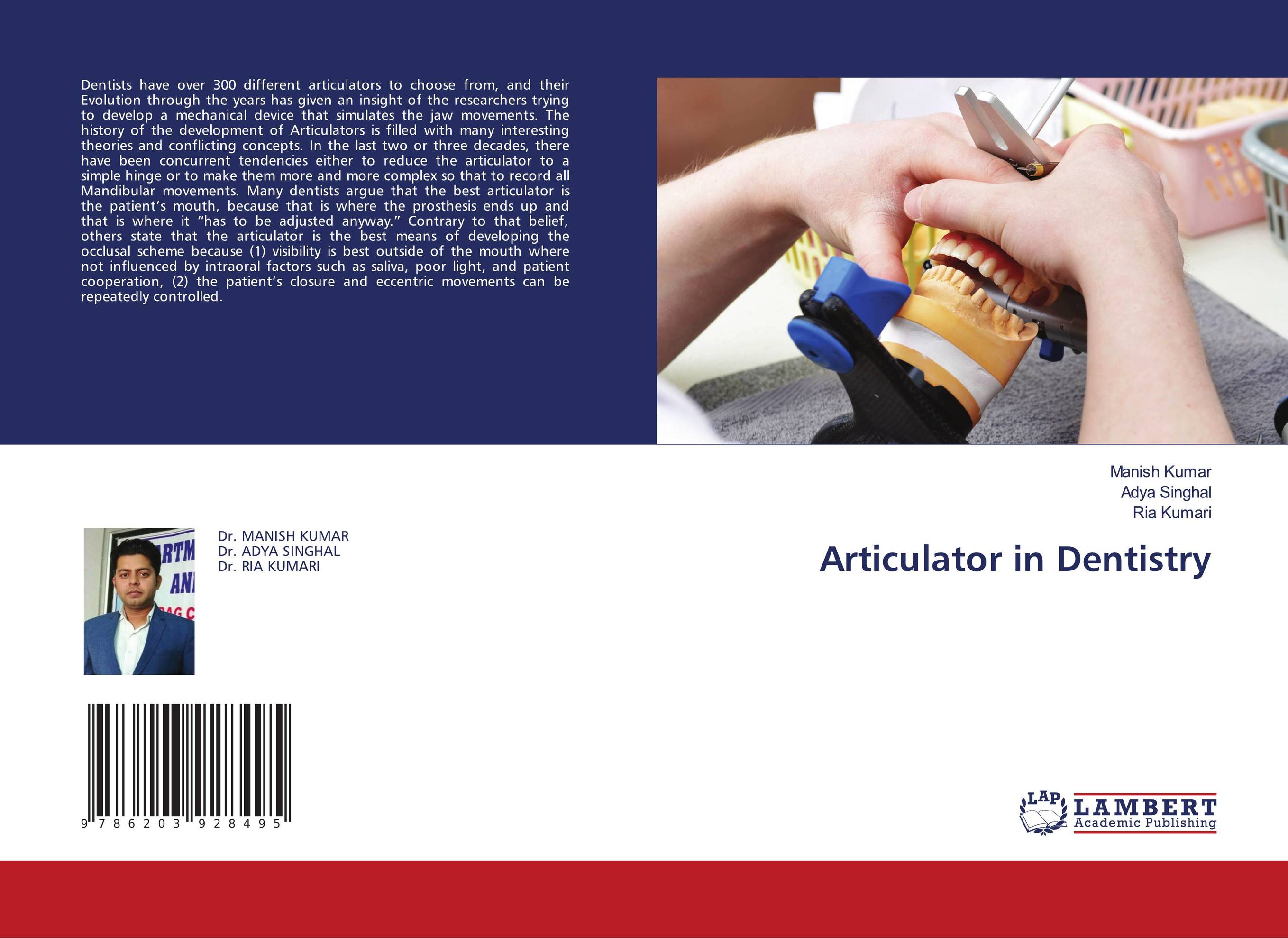| Поиск по каталогу |
|
(строгое соответствие)
|
- Профессиональная
- Научно-популярная
- Художественная
- Публицистика
- Детская
- Искусство
- Хобби, семья, дом
- Спорт
- Путеводители
- Блокноты, тетради, открытки
Articulator in Dentistry.

В наличии
| Местонахождение: Алматы | Состояние экземпляра: новый |

Бумажная
версия
версия
Автор: Manish Kumar,Adya Singhal and Ria Kumari
ISBN: 9786203928495
Год издания: 1905
Формат книги: 60×90/16 (145×215 мм)
Количество страниц: 100
Издательство: LAP LAMBERT Academic Publishing
Цена: 31889 тг
Положить в корзину
| Способы доставки в город Алматы * комплектация (срок до отгрузки) не более 2 рабочих дней |
| Самовывоз из города Алматы (пункты самовывоза партнёра CDEK) |
| Курьерская доставка CDEK из города Москва |
| Доставка Почтой России из города Москва |
Аннотация: Dentists have over 300 different articulators to choose from, and their Evolution through the years has given an insight of the researchers trying to develop a mechanical device that simulates the jaw movements. The history of the development of Articulators is filled with many interesting theories and conflicting concepts. In the last two or three decades, there have been concurrent tendencies either to reduce the articulator to a simple hinge or to make them more and more complex so that to record all Mandibular movements. Many dentists argue that the best articulator is the patient’s mouth, because that is where the prosthesis ends up and that is where it “has to be adjusted anyway.” Contrary to that belief, others state that the articulator is the best means of developing the occlusal scheme because (1) visibility is best outside of the mouth where not influenced by intraoral factors such as saliva, poor light, and patient cooperation, (2) the patient’s closure and eccentric movements can be repeatedly controlled.
Ключевые слова: PROSTHODONTICS BEST 05



